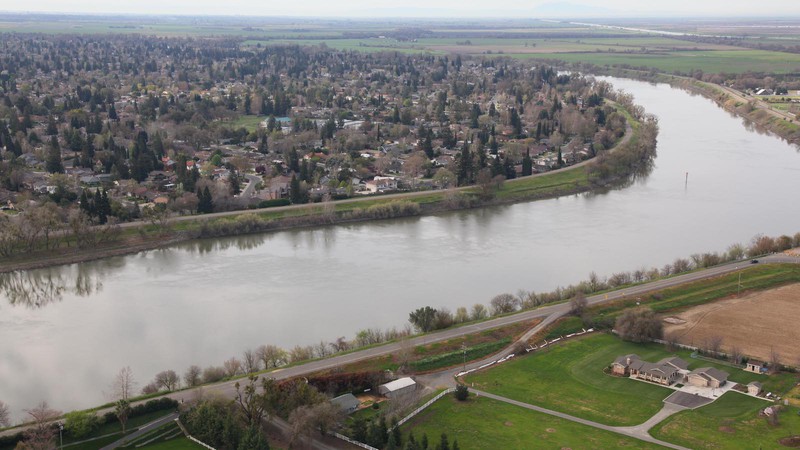
A Stanford University study of Sacramento's sewage shows high COVID levels. U.S. Army Corps of Engineers Sacramento District / WIkimedia Commons Public Domain
As Sacramento County’s COVID vaccination rate continues to lag—the county ranks 27th out of the 58 counties with just 48 percent of eligible residents fully vaccinated—a new study by Stanford University researchers suggest that a new spike in the number of infections may hit the region over the coming week.
In the ongoing study, titled the Sewer Coronavirus Alert Network (SCAN), researchers collected solid samples from several sewersheds throughout the state, finding that waste matter in Sacramento County contains among the highest levels of the COVID-causing coronavirus of any region tested.
The researchers embarked on the unpleasant but useful task of collecting “settled solids” from sewage treatment plants in Sacramento and other regions. The samples are then tested for the presence of genetic material from the SARS-CoV-2 virus, the coronavirus that causes the deadly disease which has killed 1,759 people in Sacramento County alone, according to data compiled by Worldometers.
The coronavirus is shed in human fecal stools, but there is no information indicating that COVID has yet been spread through contact with wastewater, according to the national Centers for Disease Control.
According to a paper published in September 2020 in the science journal Nature, analyzing wastewater can provide a better community-wide picture of viral spread than testing alone, because in any community there are segments of the population who for one reason or another will never be tested for presence of the COVID-19 coronavirus.
“The wastewater data gives this advantage of giving us a peek ahead and a little bit of an indicator of what may be coming for us in the next week,” Marlene Wolfe, a lead researcher on the Stanford team, told Sacramento Bee reporter Michael McGough. “But it’s also really important when a new trend starts that we are checking that against the clinical data.”
Other California communities that have shown a significant increase in the level of coronavirus found in sewage over the past two weeks include, according to the Stanford study, San Jose, Gilroy, and the Silicon Valley region as a whole.
But while Santa Clara County, and other Bay Area counties that comprise Silicon Valley, rank among the best in the state with vaccination rates over 70 percent for at least a single dose, according to ActNow data, Sacramento County remains troubled with only 55.7 percent of eligible residents at least partially vaccinated as of July 19, according to Los Angeles Times data.
Why has the Sacramento region been sluggish in getting residents to take one of the approved COVID vaccines? Several factors are contributing to the shortfall.
Rural areas in northern California have lagged behind the rest of the state in vaccination rates, according to a Los Angeles Times report, and that holds true for Sacramento County as well. County health officials last week singled out specific “hot spots” where vaccination rates are especially low, according to a report by KTXL-TV in Sacramento.
“In terms of unvaccinated hot spots, the northern part of the county has the lowest vaccination rates,” Sacramento County Public Health official Jamie White told the station. “Specifically Rio Linda, North Highlands and Citrus Heights.”
Those three areas have vaccination rates between 28 and 37 percent, according to county data cited by KTXL.
On July 19, Sacramento County had a seven-day rolling average of 169.1 cases per day, according to the Los Angeles Times data. That figure is up almost 60 percent from two weeks earlier.Another factor contributing to Sacramento County’s insufficient vaccination rate is the relatively slow pace of vaccinating young people. While the state has a 40 percent rate of teenagers between ages of 12 and 17, the rate is just 35 percent in the county. I adjacent Yolo County the rate for that age group is 45 percent.
Placer County and El Dorado County also both lead Sacramento in vaccinating teens in that age range, with 39 percent and 37 percent respectively, receiving at least a single dose.
Short articles summarizing reporting by local news sources with linkbacks to the original content.